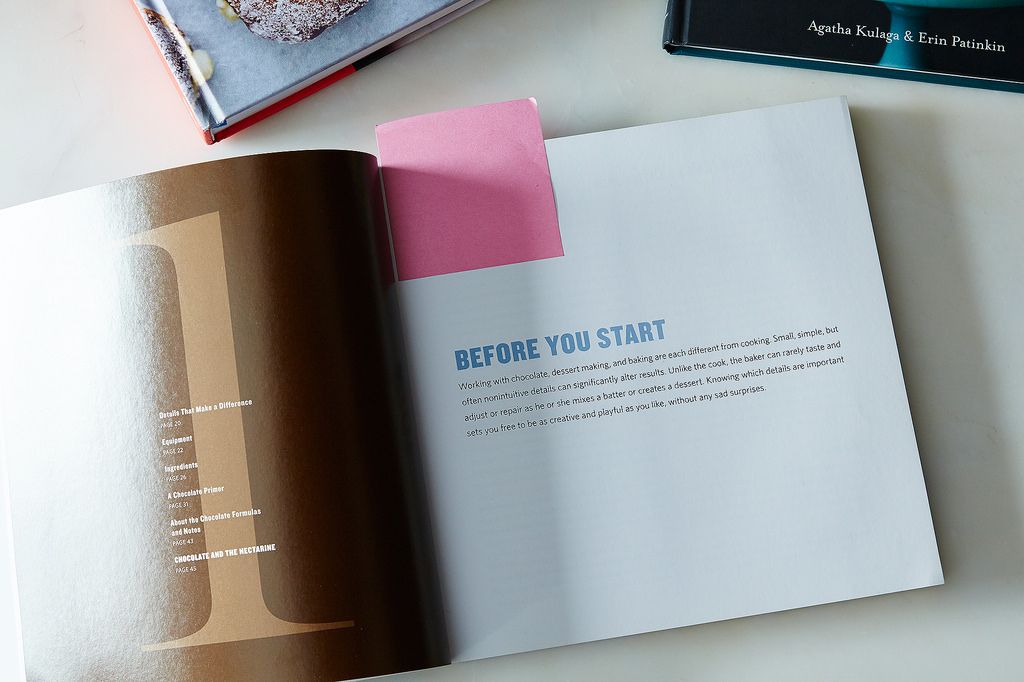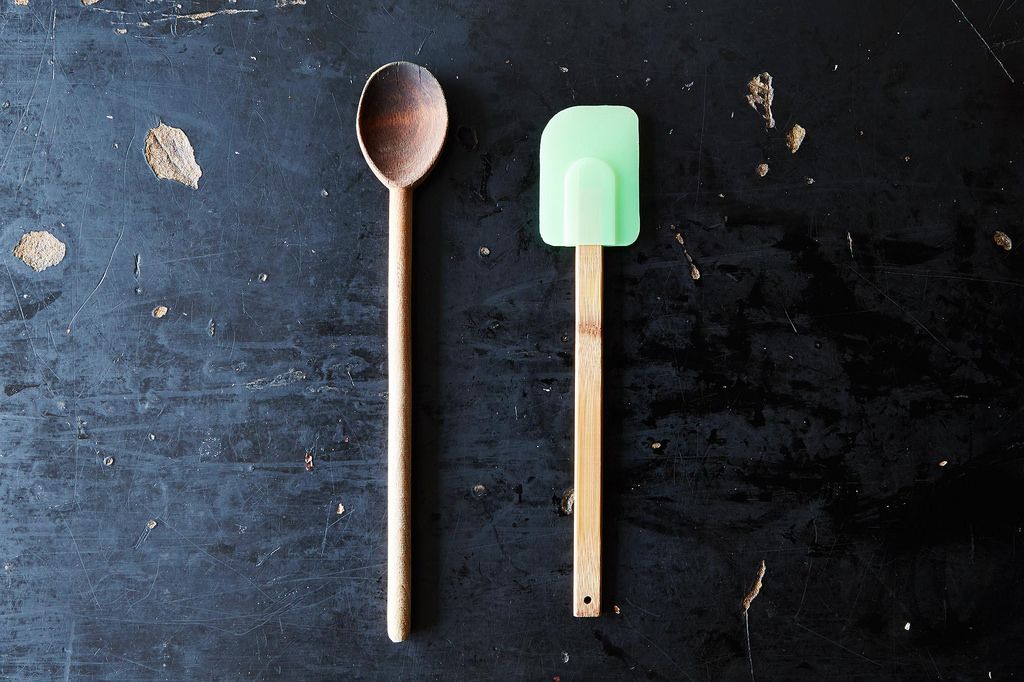Every week, baking expert Alice Medrich will be going rogue on Food52 -- with shortcuts, hacks, and game-changing recipes.
Today: Do you trust the author of your newest baking book but still find the cakes are dense and the muffins sunken? Here's how to make sure the recipes turn out like they're meant to.

Who doesn’t have the irresistible urge to crack open a brand new baking book and preheat the oven? Debby downer -- and yours truly -- says there is a better way to make a new book earn its place on your (already overflowing) cookbook shelves and get the most sublime results from the recipes.
Here are some simple steps you can take before getting started to make sure your baked goods turn out as the author intended:
1. Read the front matter.
There is gold in the pages that precede the recipes that you are dying to try. Every baker has his or her own way of doing certain things. If you really want to learn, find out how the author thinks and moves in the kitchen, and get the best possible results, you must read the front matter! This is where you learn one of the most critical elements for getting stellar results from a baking book: what type of flour was used to develop and test the recipes and how the author measures it. This is where you learn about new and familiar ingredients, equipment, and a wealth of other details, commentary, and opinion that -- whether you agree with all of them or not -- will enrich your own baking and thinking. I promise.

2. Read headnotes and side bars.
This is where you get the author’s take and experience with a specific recipe. You might learn that it tastes even better if made a day or two ahead, where to shop for a special ingredient, do-ahead tips, what to serve avec, cool variations, or whether it is better for a light lunch or after a day of extreme sports. Really.
3. Check ingredient and equipment lists and read the entire recipe before beginning.
This is where you might learn that there are ingredients to procure or prepare in advance, or that there is equipment you might not have or lengthy resting or chilling times that preclude your completing the recipe in time for your dinner party.
4. Do your mise en place.
Especially the first time, measure and set out all of the ingredients. Doing your “mise” assures that you won’t have to run to the store mid-recipe -- or ransack the pantry, or search the sandbox for your sifter -- while ingredients that should be cold get warm, melted chocolate congeals, or batters deflate. In addition to better results, mise en place promotes calm in the kitchen. Who doesn’t need that?

5. Check your oven temperature (if you don’t already do this a couple times of year).
Put an oven thermometer on a rack in the center of the oven and preheat the oven to 350° F. If the thermometer matches the setting, you are good to go. Otherwise, compensate by setting the dial higher or lower so that the actual oven temperature is correct. (Consider having a service person come and calibrate the oven professionally.)
More: And you might as well make sure your thermometer is accurate, too.
6. Adjust oven racks as called for in the recipe.
Rack position affects baking time, how cakes rise and brown, whether cookies are burnt on the surface and underdone within, and more. If a recipe does not give you rack positions, check here for my general rules.
7. Measure accurately, using a scale if the option is given.
Measurements can make the difference between a great cake and a doorstop, a perfect cookie or a paperweight. Use a scale if possible. If you are new to using weights, don’t be confused by the ounces given on the sides of a glass measure: These are liquid ounces, not weights.
8. Stick to the order of the recipe as written.
In a good recipe, steps are ordered so that the important actions can proceed without interruption. This explains why the flour is blended with the other dry ingredients first, even if they are used later. Mixing them first means that you can keep the flow of the recipe moving (and that you don’t end up with a dough or batter that has pockets of unmixed salt or baking powder).
9. Pay attention to the language of mixing: Stir, fold, whip or beat.
The texture of cake, cookies, mousse, or pastry is profoundly affected by how (and with what utensil) the ingredients are mixed.
- Stirring is meant to blend or incorporate ingredients gently but thoroughly without much aeration.
- Whipping or beating is meant to incorporate air and/or emulsify a mixture or ingredient.
- Folding is meant to incorporate one ingredient into another gently or without significantly changing or destroying the texture of the elements: When folding meringue into another mixture, for example, the goal is to blend the two while preserving as much of the air from the meringue as possible.
10. Watch for the words “just until.”
When a recipe asks you to mix “just until” the dry ingredients are blended, or heat the chocolate “just until” warm, or bake the cookies “just until” the surface looks dry, translate this to mean that excess mixing, warming, or baking is not a good thing!
11. Now enjoy!
Pick up a copy of Alice's new book Flavor Flours, which includes nearly 125 recipes -- from Double Oatmeal Cookies to Buckwheat Gingerbread -- made with wheat flour alternatives like rice flour, oat flour, corn flour, sorghum flour, and teff (not only because they're gluten-free, but for an extra dimension of flavor, too).
Photo by James Ransom



See what other Food52 readers are saying.